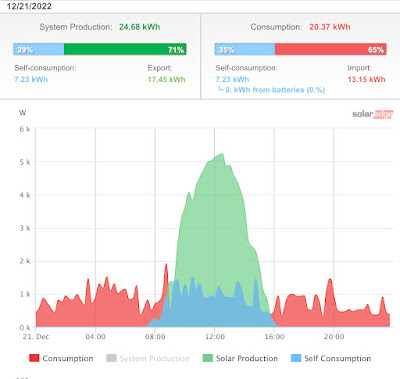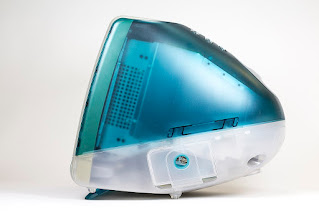I can't really explain it, but for some reason, I have spent the better part of two decades avoiding the subject of The Grateful Dead. Until now.
Yes, I've written elsewhere about my musical obsessions, my collecting bootlegs of various artists, namely Van Morrison and Charles Lloyd, and John Lee Hooker. Other notable entrants in my 2-terabytes and change of collected music include Miles Davis, John Prine, Prince, Ray Charles, The Police, The Band, and every single known performance by The Allman Brothers Band in New York City.
I knew enough to be curious and thought I had paid the band sufficient attention, enough to decide that its enormous body of work just wasn't for me. Some years back I spent a fair amount of time at The Bethel Woods Center for the Arts in Bethel, New York, aka the site of the 1969 Woodstock Music and Art Fair. It was a notable historical and cultural touchstone, and I made a point of working my way through recordings of the many musical acts that graced its stage.
And there's a lot of notable work to consider. Santana's epic Soul Sacrifice is one. The delicate harmonies of Crosby Stills & Nash count as another. The middle of Sly and the Family Stone's set was nothing short of a musical triumph for the ages. And I hate to admit it, but the only reason I know the name Richie Havens is because as a teenager I happened to see his powerful improvisation Freedom on MTV once during an afternoon home sick from school. It would take me years to understand it for what it was.
This brings us to the Dead's mostly forgettable Woodstock set. I listened to it in full a few times and concluded that if it was representative, I couldn't see what all the fuss was about. Pigpen's lengthy "Love Light" was a highlight of an otherwise uninteresting performance. It has since been disregarded as an example of a curse that hung over the Dead when it was given chances to play the big late-60s festivals.
And that is more or less where I left the issue sometime around 2010. I didn't think much about the Grateful Dead again. I did know, however, that Dead had a big hand in contributing to the taping culture that allowed me the chance to amass my massive trove of bootlegs. Every so often I would grab a Dead show from a torrent site in hopes of boosting my sharing ratio. Sometimes it helped, sometimes it didn't. By all rights, I should have been more interested than I was. What was I missing?
In 2017 I finally decided to drill down a bit. I watched the six-part 238-minute documentary "Long Strange Trip" on Amazon. I found it fascinating and engaging. And yet I had no connection to the music, so I wasn't watching it as a fan, but a casual, curious observer. The story, not the music, hooked me.
After that, I got increasingly curious about the music, but couldn't find a meaningful way in. I was moved by the story Dennis Leonard, recording engineer on the European tour in 1972 tells in Episode Three about how the song "Morning Dew" ended up as the closing track on the original "Europe '72" album. It's a beautiful anecdote, the kind that biographers dream of. It motivated me to give the track a few listens. It was interesting, but it wasn't enough for me, yet.
But now I had an album from which to launch my skeptical exploration. And so I listened to "Europe '72" a few times over. I came to really like "China Cat Sunflower" though I was always disappointed when it would segue into "I Know You Rider" because I found myself wanting the guitar groove from "China Cat" to keep going. I also had some history with the studio version of "Sugar Magnolia." The live version is a lot more interesting, thanks mainly to Keith Godchaux's gorgeous piano work. His wife Donna's infectious vocals add some life to Bob Weir's on the "Sunshine Daydream" section that closes out the tune. ("Sunshine Daydream" would later morph into its own distinct tune.)
Other tracks on the album were harder to like. "Cumberland Blues," "You Win Again" and "Tennessee Jed" felt like folksy, dated country music trying to be cool.
Others I found tolerable. Pigpen's "It Hurts Me Too" feels like a standard blues vehicle of the sort he tended to like when he wasn't consuming time and oxygen on "Love Light." Jerry Garcia's vocals on "Ramble on Rose" are kind of catchy.
Others grew on me like "Jack Straw" and let's face it, "Truckin'." By mid-2018, "Europe '72" had turned into an album I was turning to again and again to power through a tough work day, or to unwind at the end of another.
I watched that "Long Strange Trip" documentary again, and in 2022, a third time. And each time the story of the Dead became ever more enticing, and the desire to understand the worldwide fascination with the music stood as a challenge. I liked "Europe '72,' but clearly, there was more to it than that.
It wasn't long before I discovered that there was a "Europe '72 Vol. 2" and again the cycle repeated itself. "Good Lovin'" is an epic jam that I'd play again and again. And the three-track combo of "Not Fade Away" bleeding into "Goin Down the Road Feeling Bad" and then back started making the case for the devotion of the Dead's dynamic and ever-evolving live performances.
And yet I'd find myself struggling with tracks like "Dark Star" and "The Other One" which required the kind of effort I wasn't yet willing to make as a casual explorer of The Grateful Dead oeuvre. At least not yet. One I actually hated, a song so bad it should be illegal to sing except maybe in the city it's about: "El Paso." Once was too much for me and if there were a court for crimes against musical taste, I'd bring charges and win.
Still, I dug deeper and assigned myself some homework. I decided to listen to the entire "Europe '72" boxed set in its entirety over the course of the summer of 2022. I began to notice how different performances of each tune would evolve over time and learned which ones I liked the best.
Compare, for example, "China Cat Sunflower" from April 7 then April 11, April 16, April 17, April 24, then April 26 and April 29 to the definitive version that landed on the original album from Paris on May 3. And yet it would keep evolving after that, significantly through the end of the tour, May 26, by which time it would sound very different, having gone through some very cool contortions on May 10, May 11, May 16, May 18, May 23, May 24 and May 25.
And yes, I literally linked to every version of "China Cat Sunflower" from the 1972 European tour, which is the point. This chronicling of the journey of a song over the course of a particular tour is commonplace among Grateful Dead fans. The attention to detail, like changes in drum arrangements, guitar solos, tempo, and length are all eagerly pored over and examined for flights of creativity and musical choices more than a half-century after being played.
This kind of madness isn't new, and it didn't start with the Grateful Dead. I'm reminded of the late radio host Phil Schaap and his fervent devotion to the works of the saxophonist Charlie Parker. In a New Yorker profile published in 2008, the writer David Remnick wrote an opening paragraph that any Grateful Dead fan would immediately understand intuitively: Schaap's devotion as expressed by the content of his weekday morning radio program was ....
"...so obsessive, so ardent and detailed, that Schaap frequently sounds like a mad Talmudic scholar who has decided that the laws of humankind reside not in the ancient Babylonian tractates but in alternate takes of 'Moose the Mooche' and 'Swedish Schnapps.'"
Remnick goes on to explain how Schaap would stand up on the air to lingering criticism that his examinations went too far. "The examination may be tedium to you," he says during a broadcast sometime in 2008, "my bent here is that I want to know when it happened because I believe in listening to the music of a genius chronologically where possible, particularly an improvising artist." The case for examining the work of Charlie Parker applies equally to Jerry Garcia. And in Garcia's case, the corpus of material so much more voluminous.
If we wanted to take the issue under further consideration we could. A website called Gratefulstats claims to track the number and length of every Dead tune in its known history. It says that "China Cat" was played 59 times in 1972, of which 18 occurred on the European tour. It further claims that the band played the song a total of 543 times between 1968 and 1995. Another site, Jerrybase, places the number at 579 and helpfully links to an essay on the evolution of the China>Rider combo, a regular staple of Dead shows, to 1974.
So you can see where this is going: I'm kind of falling in love. And here is where it has taken me. Two nights ago I played the following two-song combo of "Scarlett Begonias" and "Fire on the Mountain" from a Dead show played at Cornell University in Ithaca, New York in the spring of 1977. It is arguably the most famous example of the Grateful Dead approach to musical improvisation, and perhaps even at or near the height of its performing powers.
I lack the words to properly describe it so I'll borrow a bit from Sadie Sartini Garner who described in a brilliantly researched piece for The Ringer earlier this year:
"The jam that leads “Scarlet Begonias” into “Fire on the Mountain” on the May 8, 1977, tape—probably the band’s most famous jam—is mind-boggling at a technical level; there are moments in which all five musicians seem to be playing both songs at once. But it’s no less admirable for the way it sustains a feeling of buoyancy, of pleasant surprise, of a seemingly unlimited number of happily beguiling opportunities around every corner."I listened as a late-September sun set over my darkening living room, intellectually and emotionally unable to let the music stop for about a half hour. If you're not affected in at least some way by what you hear, it may be that this music isn't for you. I thought the same for a very long time. And yet now I can't stop listening.
But musically is it really all that important? Is this actually music that will matter to the ages? Garner makes a persuasive case in her piece, which concerned the final tour of Dead & Co. a band made up of one and sometimes more surviving members of the original configuration with some other musicians devoted to the Dead canon:
"In 2023, even the most proficient Beatles tribute acts are working the college bar circuit, and it’s impossible to imagine anyone daring to take up the mantle of the Lennon-McCartney catalog with any credibility once Sir Paul calls it quits. But in 100 years, there will still be bands who are able to tour the country playing Grateful Dead music in new and inventive ways, bringing the old corpses to life once again, and there will be crowds eager to hear them do it."
(Photo at top by Chris Stone, taken on October 9, 1980 at The Warfield Theater in San Francisco. Image used via Creative Commons license.)
















